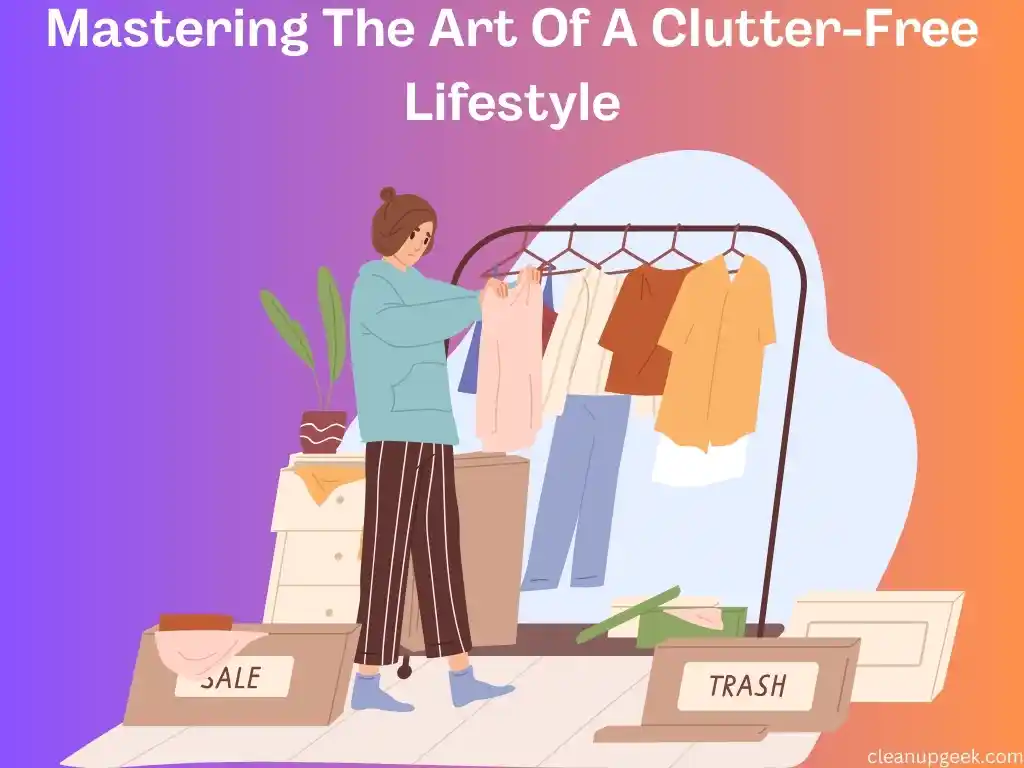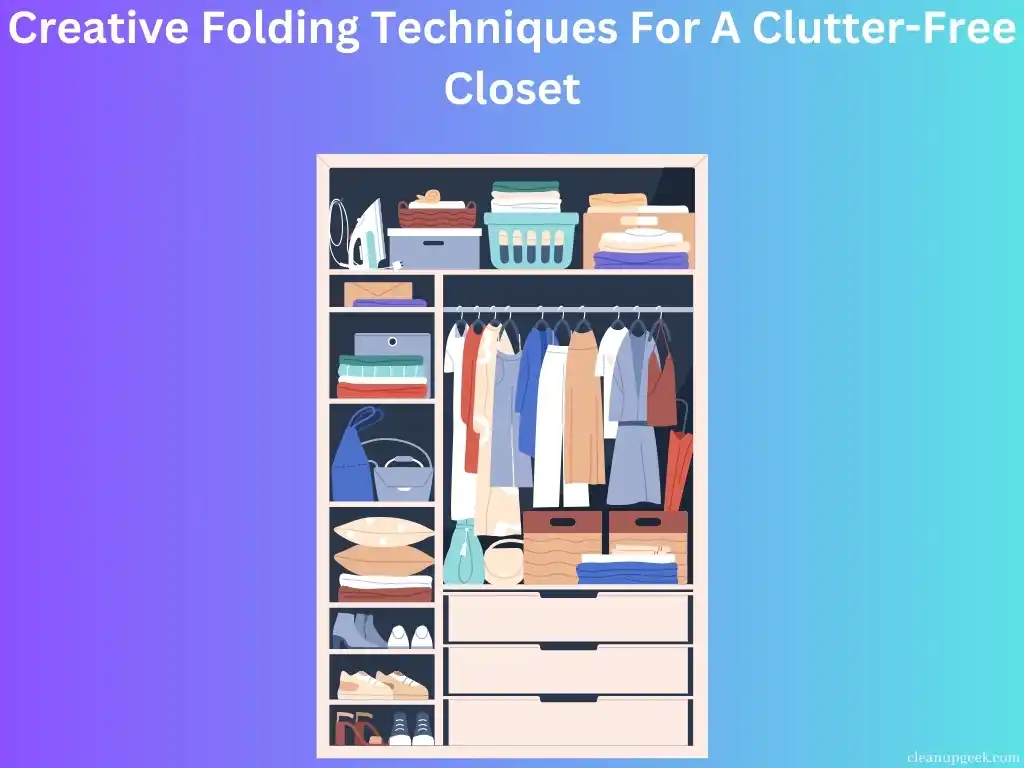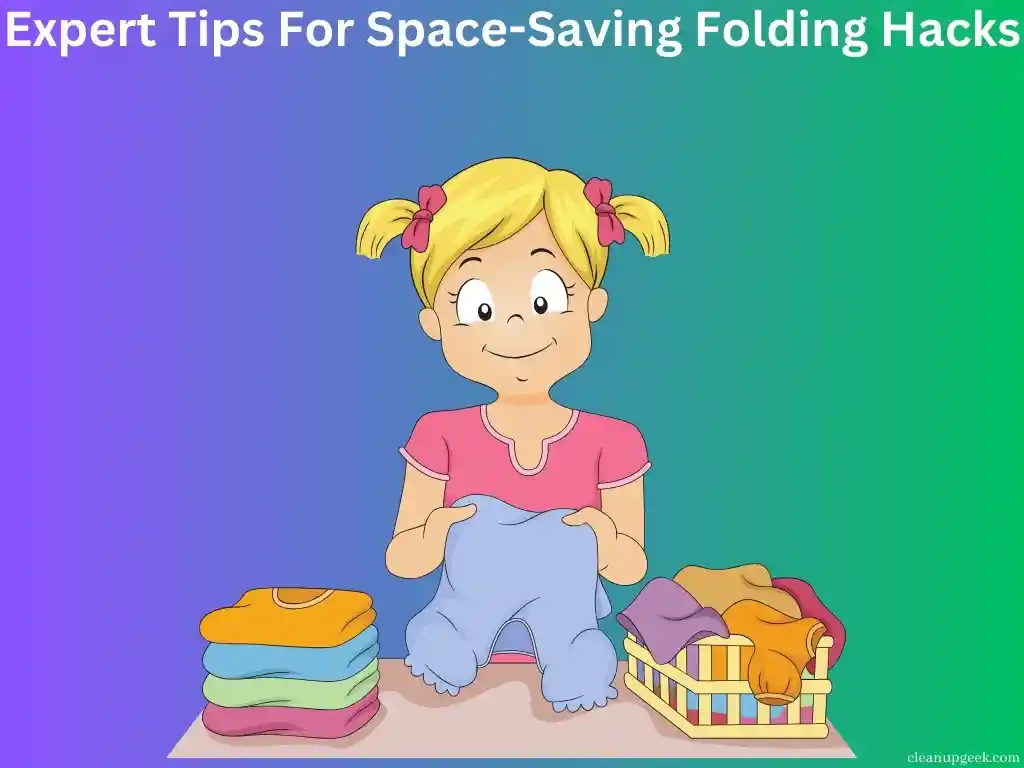Feeling overwhelmed by mountains of stuff in every corner? Clutter isn’t just messy; it can actually cloud your mind and make daily tasks harder. This blog is your guide to cutting through the chaos, offering techniques and habits to cultivate a serene, orderly home.
Keep reading—it’s time to simplify your space!
KEY INFORMATION
- Clutter can make you tired and stop you from thinking clearly. Getting rid of stuff you don’t need helps your mind and makes your home nicer.
- Start with a small spot, use boxes to sort things, and deal with one space at a time. This makes it easier to clean up without getting too tired or stressed.
- Keeping only what brings joy or is needed will help keep your place tidy. When something new comes in, let go of something else to not have too much stuff.
- Digital clutter like old files can also mess up your focus, just like physical clutter does. Clean out both kinds regularly to stay sharp and stress-free.
- To live without clutter, think before buying new things, choose items that really matter, and keep everything organized in its own place.
The Psychology Behind Clutter
The psychology behind clutter is fascinating, as it can lead to decision fatigue and mental exhaustion. Understanding the cognitive costs and attention diversion associated with clutter will help you approach decluttering in a proactive rather than reactive manner.
Decision fatigue and mental exhaustion
Making choices all day can wear you out and make your brain tired. This is what happens when you have too much stuff. You must pick what to keep, toss, or give away every time you clean.
And if there’s a lot of clutter, these choices can really drain your energy.
Having too many things also pulls your attention in different directions. It makes it hard to relax and think clearly. To stop feeling so worn out, work on getting rid of items you don’t need anymore.
This will help make room for peace and order in your life and home.
Cognitive costs and attention diversion
Clutter creates cognitive costs and diverts your attention. It leads to decision fatigue and mental exhaustion, affecting your ability to focus and process information. This can hinder your productivity in daily tasks, making it challenging to maintain an organized living environment that promotes efficiency and serenity.
As a result, decluttering becomes essential for creating a space that is conducive to clear thinking and improved mental acuity. Simplifying your surroundings by removing excess items not only enhances the physical aesthetics but also reduces the mental burden, allowing you to streamline your thoughts and actions more effectively.
Proactive vs reactive decluttering
Deciding on the type of decluttering approach can impact how successful you are at keeping your home tidy. Proactive decluttering involves regular and intentional efforts to keep clutter at bay, preventing it from building up.
On the other hand, reactive decluttering is responding to clutter only when it becomes a noticeable problem. By being proactive, you can maintain a more organized living environment and avoid feeling overwhelmed by messes that accumulate over time.
Incorporating proactive decluttering into your routine allows for a more sustainable way of maintaining order in your home. This approach aligns with the belief that small, consistent actions lead to significant results in simplifying your living space.
Scheduled vs emergency decluttering
Scheduled decluttering involves setting aside specific time slots to regularly declutter and organize your living spaces. It helps prevent clutter from accumulating and becoming overwhelming.
By dedicating a few minutes each day or a day each week to tidying up, you can maintain a clean and organized environment with minimal effort. On the other hand, emergency decluttering occurs when clutter has built up to the point of feeling chaotic or stressful, requiring immediate attention.
By understanding the difference between these approaches, you can effectively manage clutter and create a more peaceful living space for yourself.
When faced with excessive clutter that disrupts your daily life, it’s essential to recognize the triggers and thresholds that cause stress or anxiety in your living environment. Implementing proactive decluttering techniques and investing in storage solutions are key steps toward achieving a clutter-free lifestyle.
Triggers and thresholds
When clutter begins to interfere with your daily activities and cause stress, it may be a trigger for you to start decluttering. Triggers can include feeling overwhelmed by the mess or having trouble finding things due to disorganization.
Each person has their own threshold for how much clutter they can tolerate before it becomes a problem. Understanding your threshold can help you recognize when it’s time to start decluttering and organizing, ensuring that your living space remains clean, tidy, and conducive to relaxation.
Understanding what triggers you to feel overwhelmed by clutter and recognizing your personal threshold for disorganization is essential for maintaining a clutter-free lifestyle. By acknowledging these triggers and thresholds, you can take proactive steps to prevent excessive accumulation of belongings in your living spaces.
The Holistic Benefits of a Clutter-Free Lifestyle
Experience improved mental acuity and better physical health as you embrace a clutter-free lifestyle. Learn how decluttering can positively impact your overall well-being.
Improved mental acuity
A clutter-free environment can help to improve your mental acuity and cognitive function. When you remove the distractions of clutter, you create a space that allows for better focus and concentration.
This results in an improved ability to process information, make decisions, and stay organized. A neat and organized living space can reduce stress and anxiety, leading to a clearer mind and improved overall well-being.
Investing in storage solutions like shelves or bins can keep belongings organized while adding style to your living space. Sorting items into categories such as keep, donate/sell, or discard helps in creating an organized living environment.
Better physical health
Decluttering your living space can have a positive impact on your physical health. It reduces the risk of accidents and injuries by eliminating obstacles and tripping hazards, promoting a safer environment for you and your family.
Additionally, maintaining an organized space makes it easier to engage in regular cleaning activities, reducing dust and allergens that can affect respiratory health. By decluttering, you create more space for physical activity which is important for staying active and healthy.
A clutter-free living space also promotes better sleep as it eliminates visual distractions that could disrupt rest. Having a clean and orderly environment can contribute to lower stress levels, leading to improved overall well-being.
Decluttering Techniques

Tackling one space at a time allows you to focus and see progress. The three-box technique helps you make decisions about what to keep, donate, or throw away.
Tackling one space at a time
Start by picking one area, like a closet or a drawer. Take everything out and start sorting them into categories: keep, donate/sell, and discard. This makes the task less overwhelming.
Set a timer for 15–30 minutes per session to stay focused and efficient. Dispose of what you don’t need immediately to avoid second-guessing yourself or holding on to unnecessary items.
Remember, tackling one space at a time allows you to see progress quickly, motivating you to continue decluttering other areas of your home easily.
By starting with just one space at a time, it helps reduce decision fatigue and the mental exhaustion that comes with trying to tackle everything at once. Breaking down the process makes it more manageable and less overwhelming for anyone seeking simplified living in their homes.
The three-box technique
When decluttering using the three-box technique, sort items into boxes labeled keep, donate/sell, and discard. This method encourages you to make firm decisions about each item’s fate, reducing indecision and clutter.
By categorizing items this way, you can efficiently streamline your belongings while creating a neat and organized living space. Additionally, embracing this technique aligns with the principle of defining what’s important and simplifying the excess in your environment.
The three-box technique helps eliminate items that are no longer useful or meaningful to you. It allows for a systematic approach to decluttering by providing clear categories for sorting through possessions in a decisive manner.
Dealing with sentimental items
When dealing with sentimental items, such as old letters or keepsakes, it’s important to set boundaries. Keep only the items that truly bring you joy or hold significant emotional value.
Consider taking photos of certain items before letting them go to preserve the memories.
Organize sentimental items into categories and designate a specific storage area for them. This helps maintain a clutter-free environment while still cherishing meaningful possessions.
Organizing and investing in storage solutions
Invest in storage solutions that not only keep your space clutter-free but also add a touch of style to your home. From stylish baskets to multifunctional furniture, there are numerous options available that can help you maintain neatness and organization.
Utilize storage bins or boxes for items like toys, linens, and seasonal clothing, keeping them out of sight while maintaining accessibility when needed. Consider implementing shelves or wall-mounted organizers to maximize vertical space and reduce floor clutter.
Creating designated spaces for each item reduces the chances of creating new clutter.
The 10 commandments of a clutter-free life include having a place for everything; this means investing in functional and aesthetically pleasing storage solutions becomes crucial in achieving an organized living environment.
Practicing the rule of one in, one out
Keep your space clutter-free by practicing the rule of one in, one out. When you bring in a new item, make it a habit to remove something else. This simple practice ensures that your belongings stay organized and prevents unnecessary accumulation.
By sticking to this rule, you can maintain a balanced and tidy living environment without feeling overwhelmed by excess stuff. Over time, this approach will help you appreciate the things that truly matter while reducing the need for periodic massive decluttering sessions.
Decluttering experts emphasize the importance of adopting this principle as part of an ongoing lifestyle rather than just a one-time effort. It aligns with the concept of purging often and helps you live within your means while keeping your home visually appealing and functional.
Digital vs Physical Clutter
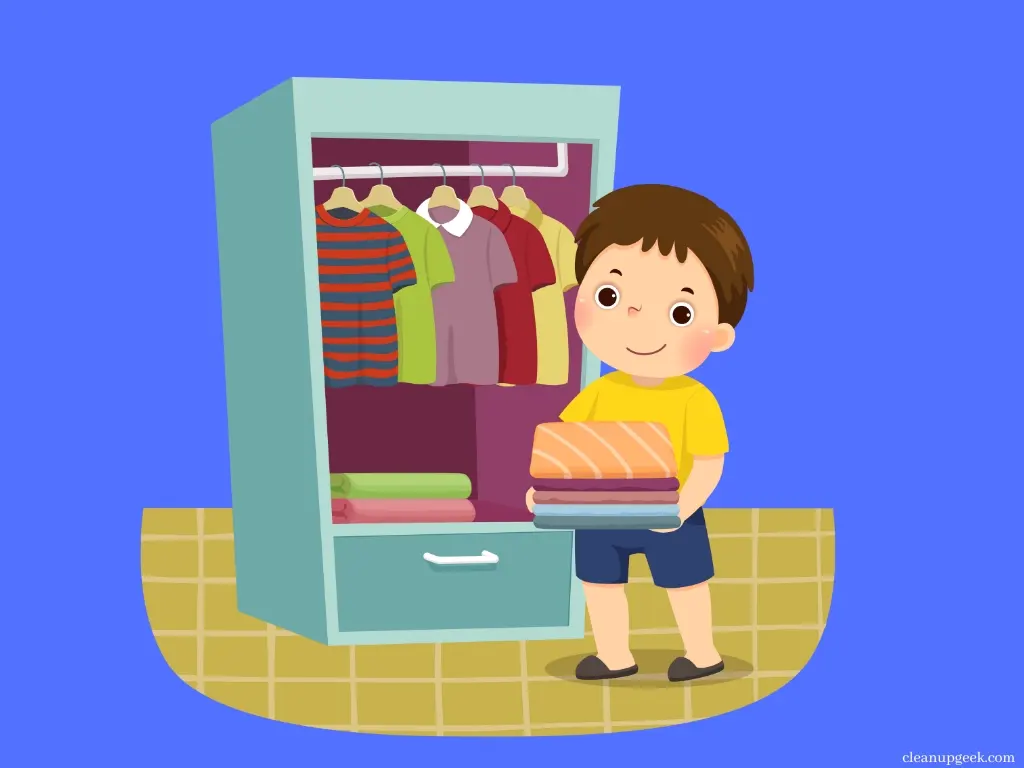
When it comes to decluttering, it’s important to consider both digital and physical clutter. In this section, we’ll compare and contrast the two types of clutter and explore integration techniques for managing both effectively.
Comparative analysis
Understanding the differences between digital and physical clutter is key to mastering a clutter-free lifestyle. Here is how they compare:
| Aspect | Digital Clutter | Physical Clutter |
|---|---|---|
| Definition | Unnecessary files, emails, apps, and data taking up space on electronic devices. | Excess physical items in our living or working space cause disorder and mess. |
| Impact on Focus | Can significantly reduce productivity by overwhelming the mind with too many choices. | Affects our ability to concentrate and process information efficiently, as stated in [IMPORTANT FACTS]. |
| Health Implications | Less direct, but can lead to stress and mental fatigue. | Can contribute to stress and various health issues due to dust and allergens. |
| Management Strategies | Regular digital clean-ups and organization of files; use of cloud storage services. | Sort belongings into keep, donate/sell, discard; invest in storage solutions [IMPORTANT FACTS]. |
| Lifestyle Integration | Requires discipline to delete or archive old files and unsubscribe from unnecessary emails. | Adopting the rule of one in, one out; ensuring everything has its own place [IMPORTANT FACTS]. |
| Visibility | Often hidden or not immediately apparent, making it easier to ignore. | Immediately visible and can impede daily tasks and living comfort. |
| Decluttering Results | Frees up digital space, potentially improving device performance and functionality. | Creates a more organized, serene living environment, and enhances physical well-being. |
Simplifying both your digital and physical spaces can contribute to a more efficient, stress-free lifestyle. Embrace these strategies to achieve the clutter-free life you believe in.
Integration techniques
To integrate digital and physical decluttering effectively, here are some techniques:
- Create a unified system for organizing both digital and physical items.
- Use cloud storage to digitize important paper documents.
- Implement a “one in, one out” rule for both physical and digital possessions.
- Schedule regular decluttering sessions for both physical spaces and digital files.
- Label and categorize items consistently across physical and digital platforms.
- Invest in tools that streamline organization across both realms, such as label makers and digital filing systems.
- Utilize apps and software to digitize and organize physical media like photos, music, and videos.
Business of Decluttering
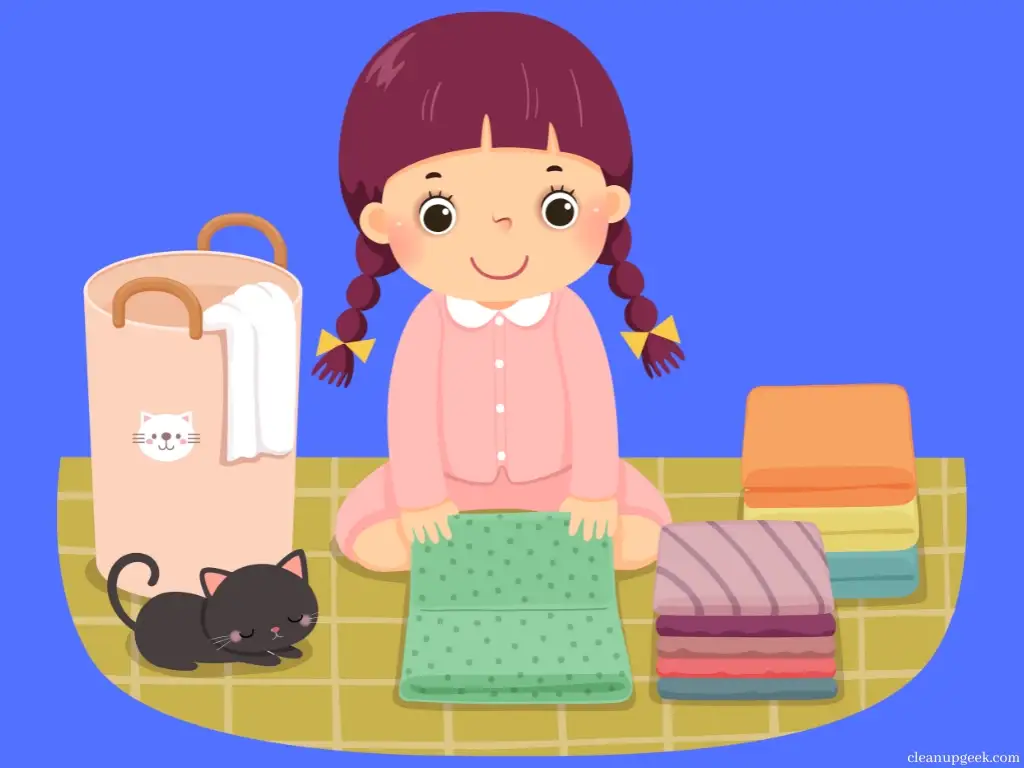
Explore the market trends and consumer psychology surrounding professional organizing services, as well as conversion tactics used to attract clients. Dive into the journey of decluttering leading to new purchases and how it affects overall consumer behavior.
Market trends
Professional organizers and decluttering services are on the rise, reflecting the growing demand for a simplified lifestyle. The Marie Kondo method and systemizing have gained popularity among individuals seeking to streamline their living spaces.
Cleanliness is not just a chore anymore but a way of life, with an increasing number of people prioritizing organized and clutter-free homes. These trends indicate a shift towards intentional living and the recognition of the benefits that come with it, aligning with the desire for improved mental acuity and better physical health.
The business of decluttering has expanded to offer tailored solutions for different lifestyles, catering to varying consumer needs. Conversion tactics centered around creating efficient storage solutions are gaining traction as consumers recognize the value in investing in products that contribute to long-term organization.
Consumer psychology
Consumer psychology plays a big role in the decluttering journey. As cleaners, launderers, or housewives, understanding the decision-making process of your clients is key. Believing that it’s possible to live clutter-free empowers them to start decluttering.
Knowing that untidiness can affect their ability to focus and process information helps them see the value of creating an organized living environment. Highlighting the benefits of decluttering, such as improved mental acuity and better physical health, can motivate customers to invest in storage solutions and take steps towards a clutter-free lifestyle.
Understanding consumer triggers and thresholds is crucial for conversion tactics. Market trends show a growing interest in decluttering products and services, indicating an opportunity for businesses.
Conversion tactics
When decluttering, consider how the cleared space could be used. Recognize that a cleaner, more organized home allows for easier movement and minimizes time spent looking for items.
As you tackle clutter, envision the potential of your living areas free from chaos; this can inspire you to keep up with decluttering habits. Additionally, identifying the benefits of a clutter-free environment may motivate you to embrace this lifestyle change.
Understanding that a tidy living space positively impacts mental and physical well-being can encourage long-term commitment to keeping your home clutter-free.
The declutter-to-buy journey
When embracing a clutter-free lifestyle, the declutter-to-buy journey becomes intentional. As Cleaners, Launderers, and Housewives, it’s crucial to consider purchases thoughtfully.
Prioritize buying items that bring genuine value and serve specific purposes in your home. Avoid impulsive buying by evaluating whether a new purchase aligns with your decluttering goals and adds practicality or joy to your life.
Understanding the impact of each item you bring into your space can prevent unnecessary accumulation and maintain the benefits of a clutter-free environment.
Conclusion and final thoughts
In conclusion, mastering a clutter-free lifestyle is achievable. It involves understanding the psychology of clutter, embracing decluttering techniques, and recognizing the benefits of a tidy environment.
By prioritizing what truly matters and incorporating simple decluttering practices into your daily routine, you can enjoy the holistic advantages of living in an organized space. Experience improved mental clarity, better physical health, and a sense of calm by simplifying your surroundings and embracing a clutter-free life.
FAQs

1. What does it mean to master the art of a clutter-free lifestyle?
Mastering the art of a clutter-free lifestyle means learning how to keep your space clean and organized without having too much stuff.
2. Why is having a clutter-free home important?
A clutter-free home can make you feel calm and happy because there’s more space and less mess.
3. How do I start living a clutter-free life?
Start by getting rid of things you don’t need, organizing what’s left, and making rules for yourself to keep things tidy in the future.
4. Can anyone learn to live clutter-free or is it really hard?
Anyone can learn! It takes practice and patience but once you get used to it, living with less clutter becomes easier.
